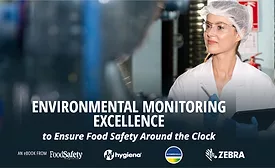Testing & Analysis
Sponsored Content
eBook | Environmental Monitoring Excellence: Ensuring Food Safety Around the Clock
December 9, 2024
Never miss the latest news and trends driving the food safety industry
eNewsletter | Website | eMagazine
JOIN TODAY!Copyright ©2025. All Rights Reserved BNP Media.
Design, CMS, Hosting & Web Development :: ePublishing











